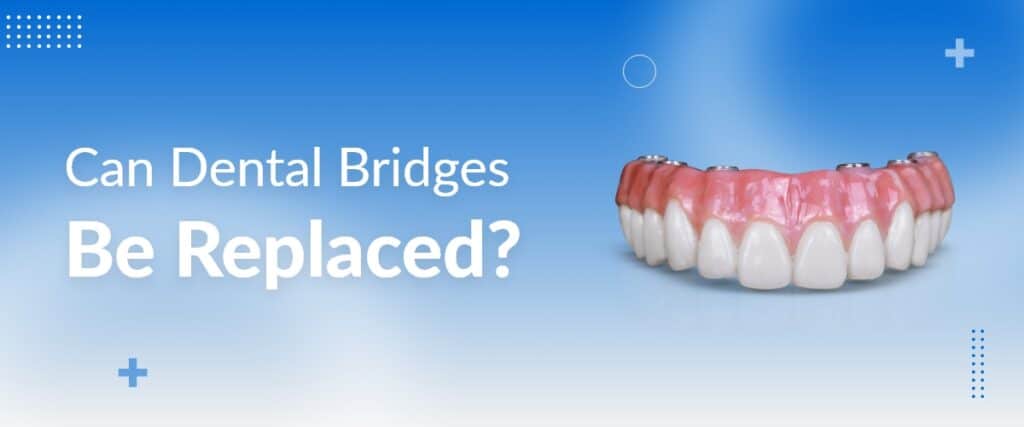Dental bridges are a popular treatment option for people who have lost one or more teeth. They can improve the appearance of your smile, restore your ability to chew and speak properly and prevent other teeth from shifting out of place.
However, dental bridges are not permanent and may need to be replaced at some point. In this post, we’ll explore the reasons why dental bridges may need to be replaced, the process of replacing them, and the alternatives to replacing dental bridges.
Reasons Why Dental Bridges May Need to be Replaced
- Wear and Tear: Dental bridges are subject to wear and tear just like natural teeth. Over time, the bridge may become loose, the porcelain or composite material may wear down, or the metal framework may corrode.
- Decay: Decay can occur underneath the dental bridge if there is a gap between the bridge and the supporting tooth. This can cause the supporting tooth to get a cavity under the bridge, leading to a need for replacement. This is a common reason for replacement since dental bridges are difficult to floss and tend to get cavities because food can get stuck under them.
- Damage: Dental bridges can be damaged due to trauma or accidents. A fall or blow to the mouth can cause the bridge to chip, crack, or become dislodged.
- Shifting Teeth: The teeth adjacent to the missing tooth may shift over time, causing the bridge to become misaligned or uncomfortable. This can also affect the appearance of your smile.
- Gum Disease: Gum disease can cause the supporting tooth to become weakened and eventually require removal. This can result in the need to replace the dental bridge. also, when many teeth are being held up by a few supporting teeth, the supporting teeth will get more bone loss since they have to take on the load of multiple teeth.
The Process of Replacing Dental Bridges
- Evaluation: The first step in replacing a dental bridge is to evaluate the existing bridge and determine the reason for replacement. Your dentist will examine the bridge, take X-rays, and evaluate the condition of the supporting teeth.
- Removal: The existing dental bridge will need to be removed before a new bridge can be placed. This may require drilling and removal of the supporting teeth.
- Impressions: Once the existing bridge is removed, impressions of your teeth will be taken to create a new bridge.
- Temporary Bridge: While your new bridge is being created, a temporary bridge will be placed to protect your teeth and prevent shifting.
- Placement: Once your new bridge is ready, it will be placed and adjusted to ensure a comfortable and natural fit.
Alternatives to Replacing Dental Bridges
- Implants: Dental implants are a popular alternative to dental bridges. They involve placing a titanium post in the jawbone, which serves as an anchor for a replacement tooth. Implants offer a more permanent solution and do not require support from adjacent teeth. this can avoid long term problems such as cavities under the bridge and bone loss from too much stress on the supporting teeth.
- Partial Dentures: Partial dentures are removable appliances that can replace one or more missing teeth. They are custom-made to fit your mouth and can be easily removed for cleaning and maintenance. They can replace just one or multiple missing teeth and have “hooks” that hold on to your remaining teeth.
- Orthodontics: Orthodontic treatment may be an option for people with shifting teeth due to a missing tooth. Braces or aligners can be used to shift the teeth back into place, allowing for a new dental bridge or implant to be placed.
Dental bridges are a popular treatment option for people with missing teeth, but they may need to be replaced at some point. Wear and tear, decay, damage, shifting teeth, and gum disease are some of the reasons why dental bridges may need to be replaced.
The process of replacing dental bridges involves evaluation, removal, impressions, temporary bridge placement, and final placement. Alternatives to replacing dental bridges include implants, partial dentures, and orthodontic treatment. If you’re considering replacing your dental bridge, speak with your dentist to determine the best option for your individual needs and circumstances.
